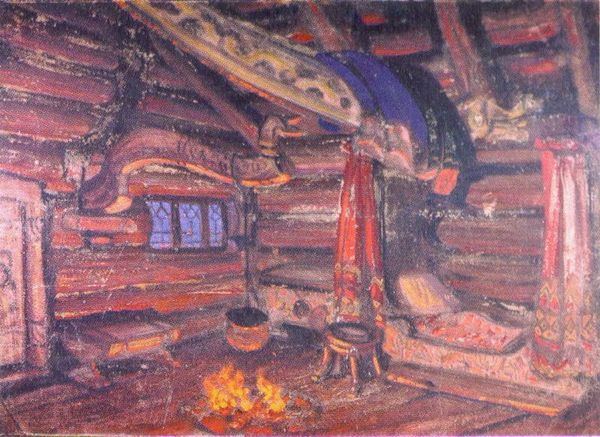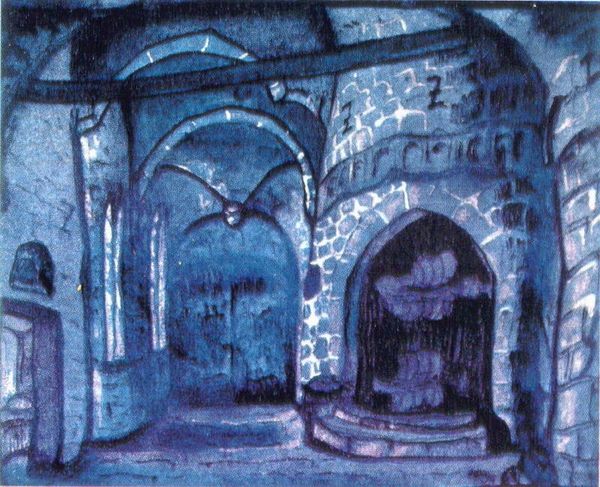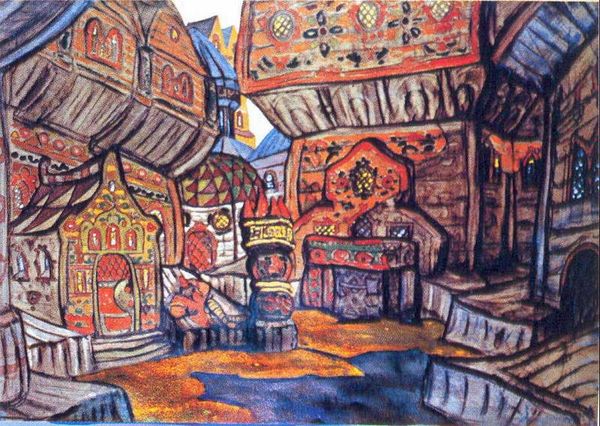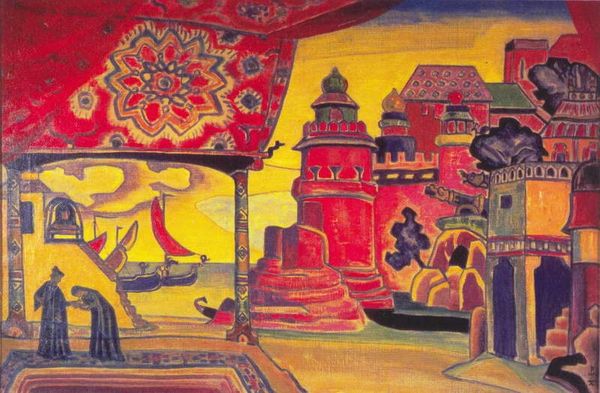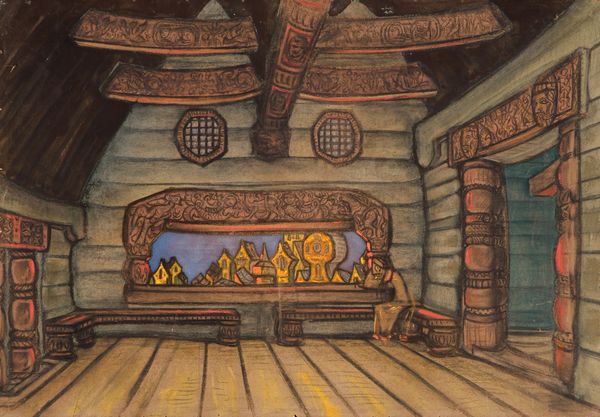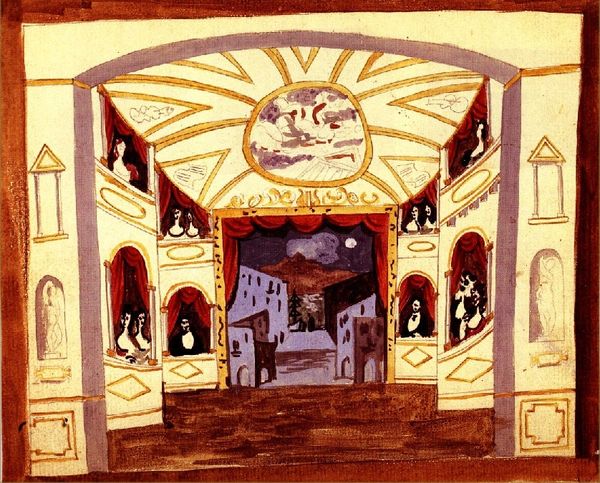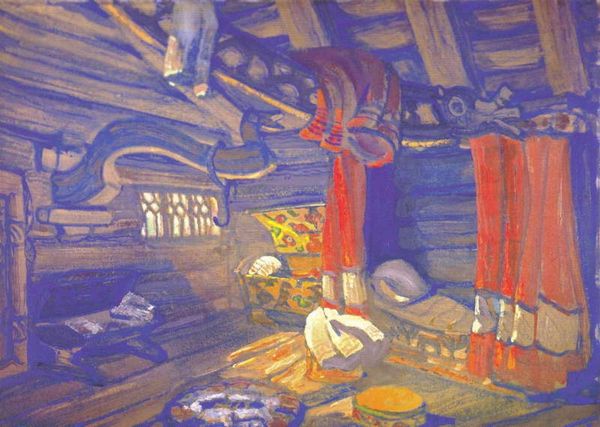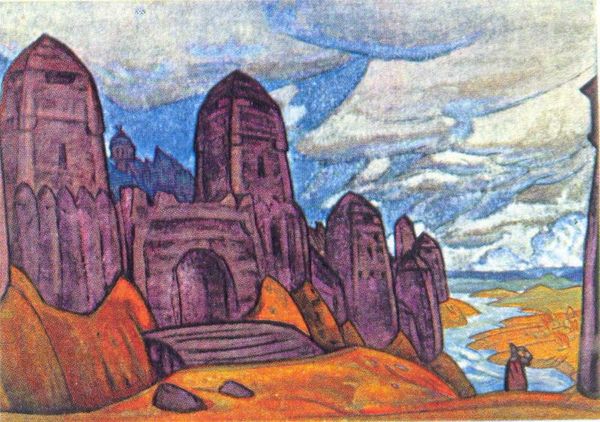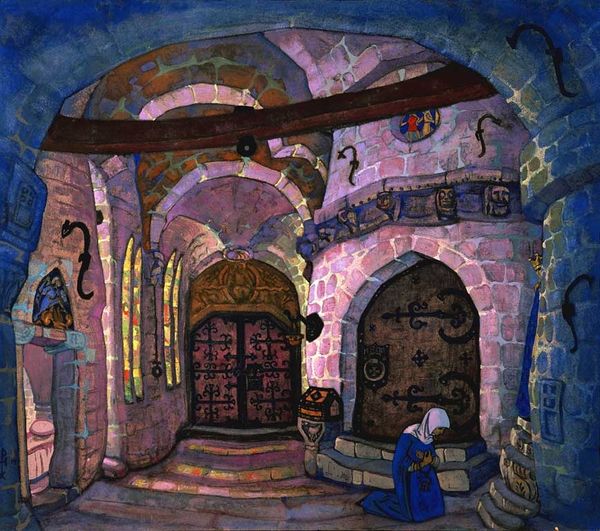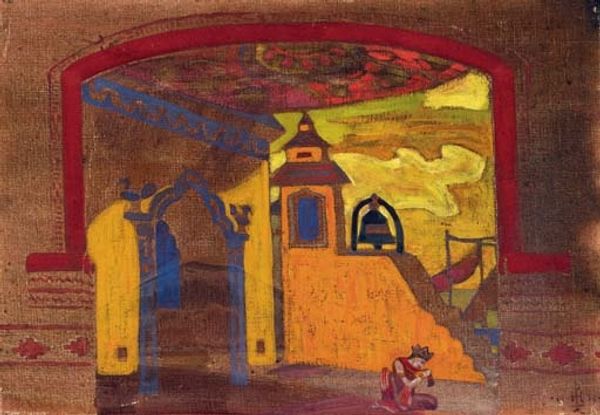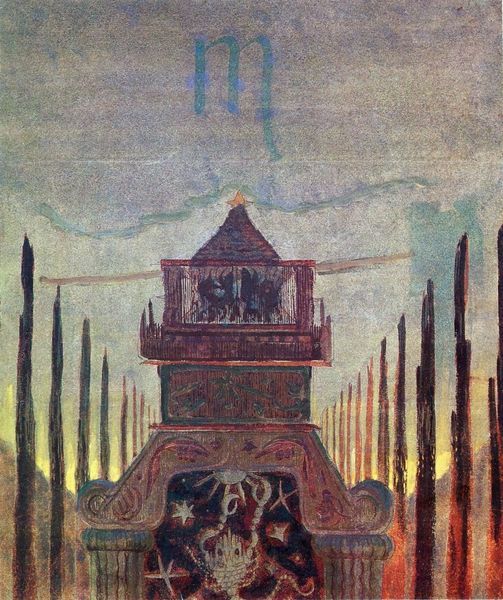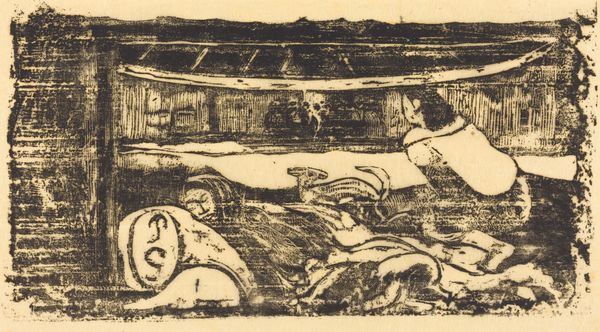
tempera, painting, architecture
#
tempera
#
painting
#
landscape
#
russian-avant-garde
#
architecture
Copyright: Public domain
Curator: Immediately striking—a very cloistered interior, almost like a bunker, yet with this vivid cityscape peeking through the window. A peculiar tension. Editor: Yes, this tempera on canvas by Nicholas Roerich, titled "Terem of Yaroslavna. New Moon.," created in 1914, offers a fascinating peek into the social imagination of early 20th century Russia. The painting’s architecture suggests confinement, maybe even oppression, doesn't it? The title references Yaroslavna’s lament from the "Tale of Igor's Campaign," immediately rooting this image within a specific literary and cultural narrative of longing and isolation during times of conflict. Curator: I'm drawn to the execution, the layering of pigment and the clear intention to expose, rather than conceal, the architectural structure. This emphasis on how space is constructed mirrors the way Roerich highlights both his chosen medium and subject in his production. Did tempera’s matte surface encourage such an aesthetic approach for architectural painting, do you think? Editor: That’s an interesting proposition, how artistic means intersect with production and its possibilities! I tend to understand the architectural setting as not just shelter but an actively gendered space: The terem, historically associated with women's seclusion, heightens the feeling of constraint but maybe also alludes to the strength of those women's stories echoing through time. Are we invited to witness their view onto an abstracted world, from inside their confined space? How might such architectural enclosure also relate to contemporary ideas of female self determination? Curator: And that distant, almost dreamlike cityscape visible through the window really emphasizes the disconnect. Notice how it's not quite representational – buildings as almost crystalline abstractions... like stylized components produced en-masse, their value is as a compositional device not architectural verisimilitude. It is as if the materials themselves are mediating access. I am compelled to consider how production processes transform into these geometric shapes to denote civilization’s remove. Editor: It definitely introduces this intriguing tension between the real and the symbolic, between tangible oppression and possible escape through imagined spaces. To that extent the abstracted cityscape opens an intersectional space; we could speculate that this architectural approach may offer an interesting comparison with those facing economic oppression; perhaps the promise of freedom for those facing the impacts of the Great War on their economic livelihoods Curator: It’s really quite profound seeing the architecture like this...not merely representing location, but actively building emotional context! Editor: Yes. Hopefully this insight can add depth for those who engage with the work now.
Comments
No comments
Be the first to comment and join the conversation on the ultimate creative platform.
